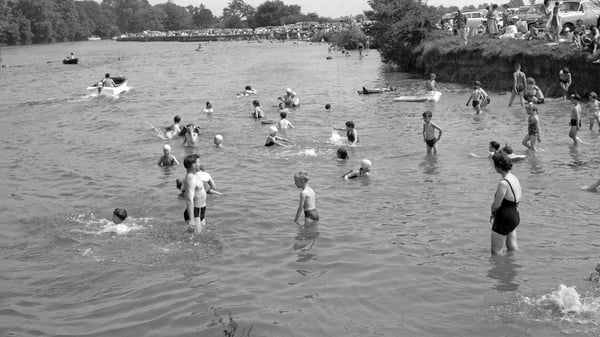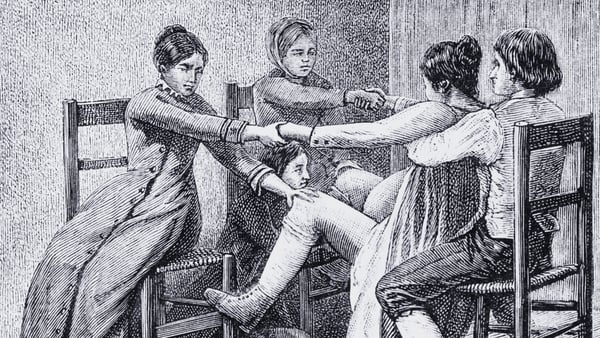Analysis: our ancestors engaged in a wide range of rites and rituals on May 1st which were believed to bring good luck
Bealtaine is a festival which occurs on May 1st and also refers to the month of May. It typifies our recent Irish ancestors’ dual spiritual tradition: predominantly Christian but with pagan aspects remaining. The Roman Catholic church tried and failed many times to get the Irish people to fully renounce their old pagan rituals and superstitions. In many instances, the church simply combined Christian with pagan festivals. A major Celtic / pagan festival, Bealtaine marks the start of the Celtic summer and it is also seen in Ireland as the month of Our Lady the Blessed Virgin Mary.
Our ancient and recent farming ancestors relied on significant calendar events to give them reassurance and to remind them when to sow and when to reap. Bealtaine is one of the four major Irish Celtic annual festivals along with Samhain, Imbolc and Lughnasa. It signifies the return of the light and widely observed throughout Ireland, Scotland and the Isle of Man, while May Day celebrations occur throughout Europe.
Fire
Fire played a special part in these rituals. It has been speculated that the fire in Bealtaine celebrations symbolises the return of the sun after winter. Other theories suggest that fire rituals are based on a type of imitative or sympathetic magic. Certain practices were to ensure a plentiful supply of sun for the growing season. Bonfires were lit and their flames, smoke and ashes were believed to have protective powers.
We need your consent to load this rte-player contentWe use rte-player to manage extra content that can set cookies on your device and collect data about your activity. Please review their details and accept them to load the content.Manage Preferences
From RTÉ Radio 1's Countrywide, folklorist & film-maker Michael Fortune on the traditions associated with May
It marked the time on the farming calendar for cattle to be driven out to the summer pastures and rituals were performed to protect the cattle, crops and people, and to encourage growth. The people and their cattle would walk around the bonfire and in some cases leap over the flames or embers. These rituals involving fire were to symbolically burn and cleanse potentially destructive influences, marking a new beginning in the farming year.
By the 19th century, our farming ancestors dwelled in thatched cottages (the dominant building type in the Irish countryside). Although the majority worshipped under the Catholic religion, many elements of Bealtaine persisted, and some listed here continue to this day.
READ: Room to improve: the homes of Ireland's 19th century rural poor
The fire in the hearth was the central focal point for all activities in the cottage. The fire at all other times of the year was never allowed to go out, but all household fires were ceremonially quenched on May Day and then re-lit with fire from the Bealtaine bonfire outside. At this time of year, fire was not permitted to leave the house – even its smoke - as it was considered likely that all luck of the house would also leave with it.
Such beliefs dominated other important goods leaving the house, such as dairy products and tools. Anything that was related to the profit of the house was not given away at this time, as it was believed to do so was to give away the profit of the year. Out of respect for these beliefs, and to retain the luck of houses, water or fire was never asked for or taken from the home on May Eve or May Day. Not even to light a pipe! It was considered offensive to even ask to borrow something from the house at this time, and people who did so were viewed suspiciously.
Water and flowers
Water drawn from local holy wells at this time was considered especially potent and flowers left at holy wells on May Day were also believed to be restorative. The dew that occurred on the morning of May Day was thought to offer a cure for the rest of the year and washing the face with or walking in the first dew of May Day was believed to have curative properties.
We need your consent to load this rte-player contentWe use rte-player to manage extra content that can set cookies on your device and collect data about your activity. Please review their details and accept them to load the content.Manage Preferences
From RTÉ Radio 1's Manchán's A-Z of Ireland, Manchán Magan looks at the overlooked tradition of rolling in the May Day dew
Many pagan Celtic traditions from medieval times were incorporated into Marian veneration, the most notable of which was the collection of flowers. Flowers were used to decorate grottoes, altars and Marian shrines, as well as crowning statues of Our Lady in processions.
May altars in the home were also decorated with flowers. These holy spaces in the home, flanked by pictures of saints, Our Lady and the Sacred Heart, replaced the tradition of pagan offerings to the gods likely to have been in Irish homes since pre-history. Seasonal bluebells, mimicking the blue associated with Our Lady, were popular. Above all, yellow flowers, such as primroses and gorse were seen as particularly potent against evil spirits (faeries) who were renowned for their dislike of that colour. Flower offerings were believed also to appease nature spirits and pre-Christian gods throughout Europe.
Good luck and bad luck
Although May was heralded with joy, an element of the magical lay behind the merriments, with protection against unseen forces given an urgency at this time. This was especially believed to be the case between sunrise on May Eve and sunrise on May Day, when evil spirits were seen to be at their most potent. Wells were guarded at that time in case the water within was taken to be used by those who might work magical spells against you. May flowers were spread on doorsteps (a common tradition in Ulster) and hung above doors (considered liminal areas) to discourage bad luck from entering the home.
READ: How Bealtaine marks the start of summer in Ireland
There were curious beliefs around housework in May. It was considered unlucky to dust the house and believed unlucky to get married in May. It was considered unlucky to dig, bathe, whitewash or sail on May Day. Not hearing the cuckoo in the month of May meant certain death for the non-hearer!
May trees
Decorating a May Bush or May Tree was traditional in many parts of Europe. In Ireland, a tree or bush was decorated with ribbons or shells near an individual house. It was usually white thorn, the most potent of faery trees which flowers in May, which paradoxically is considered very unlucky if brought indoors. A green bough hung over the door, woven from sycamore, was also believed to bring good luck. Some believe that customs like these are a remnant of a very ancient pagan tree worship.
The views expressed here are those of the author and do not represent or reflect the views of RTÉ






